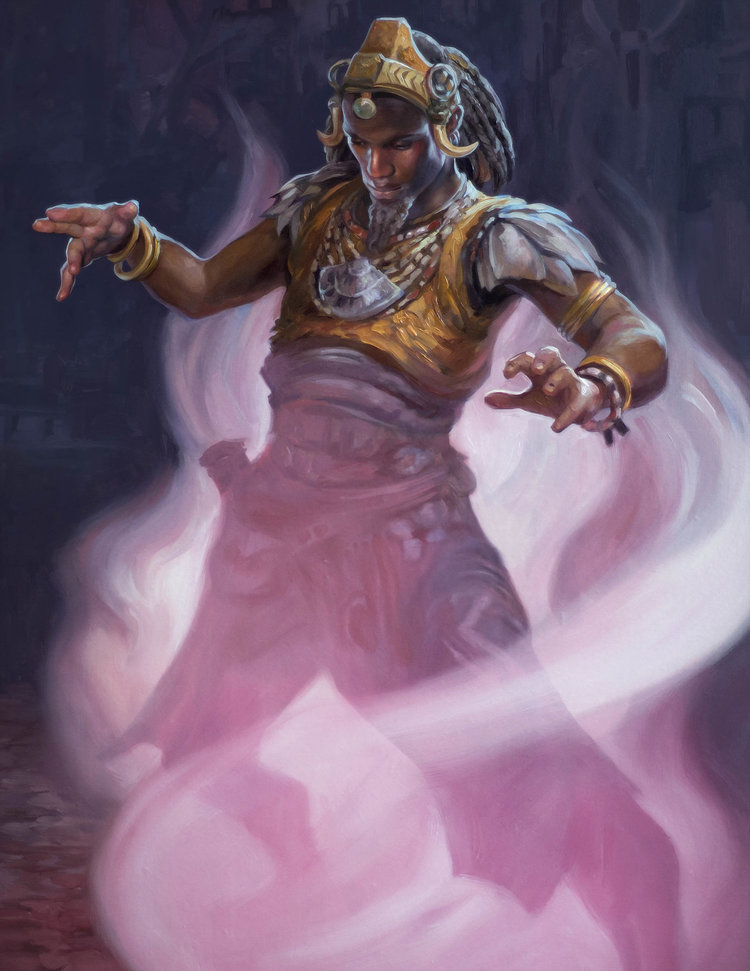As we round out the Arcane Subclasses Unearthed Arcana, let’s not forget about the Arcana Domain Cleric – be a Cleric AND a Wizard.
In the latest Unearthed Arcana is all about Arcane Subclasses we got our first look at how the Arcana Domain Cleric might be revised/updated for D&D 5.5E. And honestly, it doesn’t take much. Which is probably a sign that spellcasters have always been good, and combining Clerics and Wizards together just works. Though that’s not to say the class is entirely unchanged. It boasts a new bonus spell list, as well as some very important distinctions from its 5.0 version that are worth mentioning.
Arcana Domain Cleric – Making Magic Divine
The Arcana Domain Cleric was first introduced in the Sword Coast Adventurer’s Guide. The book that was notorious for haing two good subclasses. And this was one of them (the other was the Bladesinger). At its core, the Arcana Cleric is all about magic – both arcane and divine. These might be Clerics of Mystra, if you’re looking at the Forgotten Realms, or Io in Greyhawk, or any of the various gods of magic in D&D’s multiverse.
There are a number of ways to approach this. You could be weave-obsessed like Baldur’s Gate 3‘s most-divorced dad Wizard, Gale. Or you could view magic as your responsibility to shepherd and teach people about. Whatever the case, the Arcana Domain lends itself beautifully to Clerics who meddle in the affairs of Wizards.
New Abilities
Starting at Level 3 when they get their list of Arcana Domain Bonus Spells. This is revised from SCAG, but only a little. You still gain bonus spells that feel like they were lifted straight from a pre-generated Wizard’s spellbook: Detect Magic, Magic Missile, Magic Weapon, Nystul’s Magic Aura, etc. Though now you also gain Counterspell and Bigby’s Hand in lieu of Magic Circle and Planar Binding. But at the end of the day, your spell list is still what a typical NPC Wizard would have in their book.

Of course, Bonus Spells are just one feature. You also gain Arcane Initiate, which in 5.0 was just a flavorful ribbon of a feature. But now, it’s actually got some mechanical benefits that you might well use. For instance, you gain Expertise in Arcana (assuming you already have proficiency in the skill). And you get two Wizard cantrips of your choice, which is a pretty useful get. It gives you access to True Strike for making your weapon attacks magical and radiant.
This is an underrated win for the Arcana Cleric. Because in 5.5E, Clerics as a baseline got a lot more flexible. It used to be that your subclass (chosen at level 1) locked you in to playing as either a melee cleric who would eventually just cast spells, or a spellcasting Cleric who eschewed combat altogether.
But now you can customize your playstyle. Clerics can pick what Divine Order they belong to and that determines whether they get better in melee or magic. And with True Strike, for instance, you open up a ton of new doors for interesting builds. And all starting at level 3. I think this is a sleeper hit of a feature that might go under the radar, but is especially potent in the right hands.
And of course, you get a Channel Divinity option, Modify Magic. This lets you use your Channel Divinity whenever you cast a spell to modify the magic. You can either give one target of the spell Temporary Hit Points (2d8 + Cleric level) or you can make one target of the spell make a save with a -1d6 penalty. Both fun options.
Wizards And Clerics Together At Last
Spellcasting is the heart of this subclass. And to be fair, it’s the heart of most Clerics – you can see it in the subclass design. They get some features at level 3, one at level 6, and then nothing again until level 17 – because the Bonus Spells are as much a part of the class’s identity as anything else. So while you might not gain a feature at level 7 on paper, you gain the ability to cast Arcane Eye and Leomund’s Secret Chest (which are of questionable use). But you’ll also have Counterspell and Dispel Magic as bonus spells by them, which is slightly overshadowed by your next feature.
At level 6, Dispelling Recovery lets you cast Dispel Magic for free as a Bonus Action whenever you cast a spell with a spell slot that restores hit points to a creature. This means you can heal an ally and also dispel a harmful effect on them. I think the jury’s out on this one – on paper it’s great. It makes you a more efficient caster. But I can count on one hand the number of times a Dispel Magic has come up in a campaign lately.
Especially since a lot of monsters use magical attacks instead of spells – though I think when it feels good, it’s going to feel really good. Especially since you can just do it as part of your normal spellcasting. It feels like WotC is trying to incentivize the Arcana Cleric as a support caster, instead of just as someone doling out the damage – but Clerics kind of exceed at doling out the damage so, it’s anyone’s guess.
Finally, at 17th level, Arcane Mastery grants you a retroactive bonus spell to your list. You can pick four Wizard spells – one each from levels 6, 7, 8, and 9. Technically whenever you gain a level you can change the spells around, but that’s 3 times maximum. Still, nice to have, great for anyone playing up at that level range.
What do you think of the Arcana Domain Cleric in its revised form? Would you do it differently? Better? Now’s your chance to tell WotC – fill out the survey at the link below!
Wizards and lerics, never going to escape the magic allegations!
Don’t Miss:
Read more at this site





